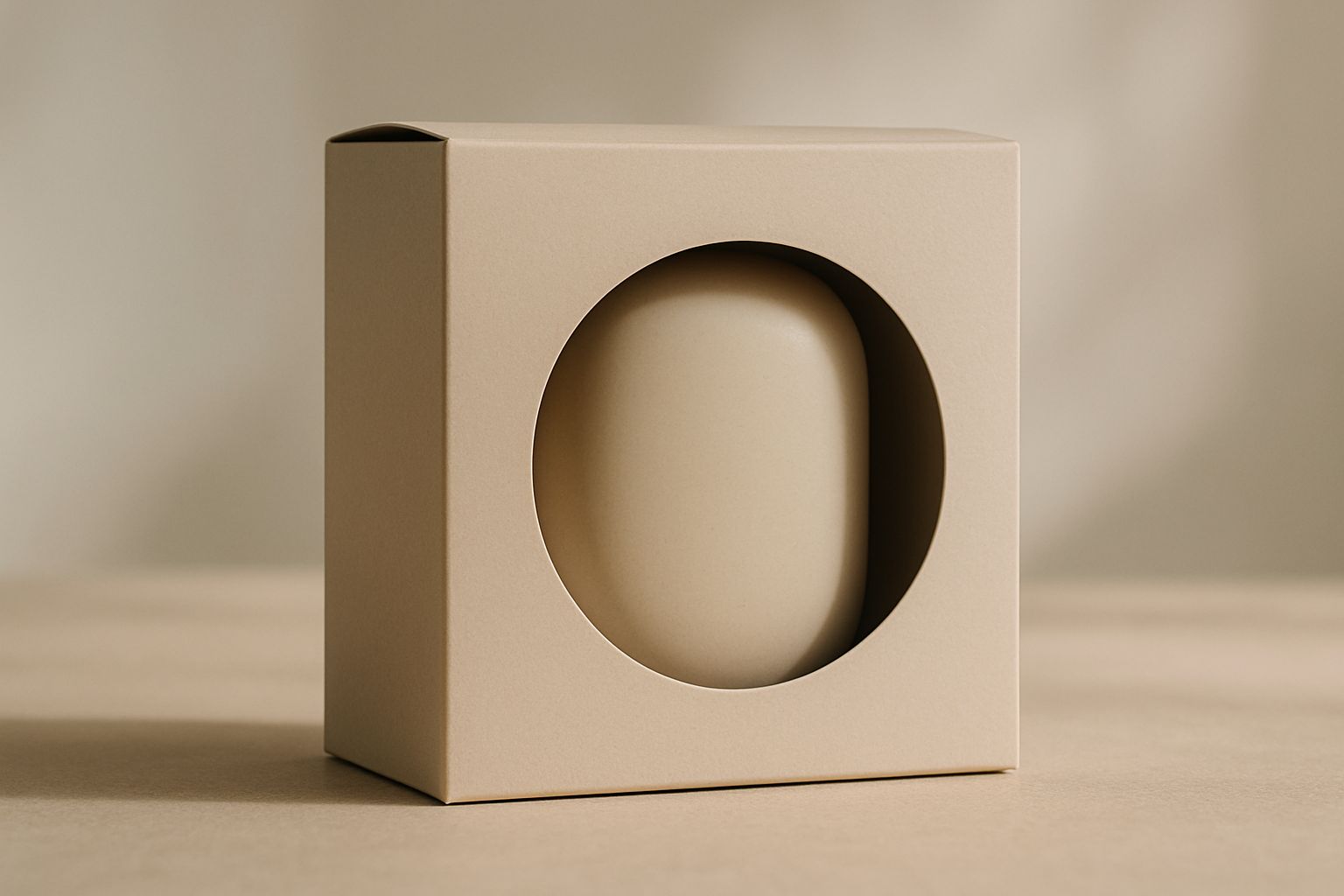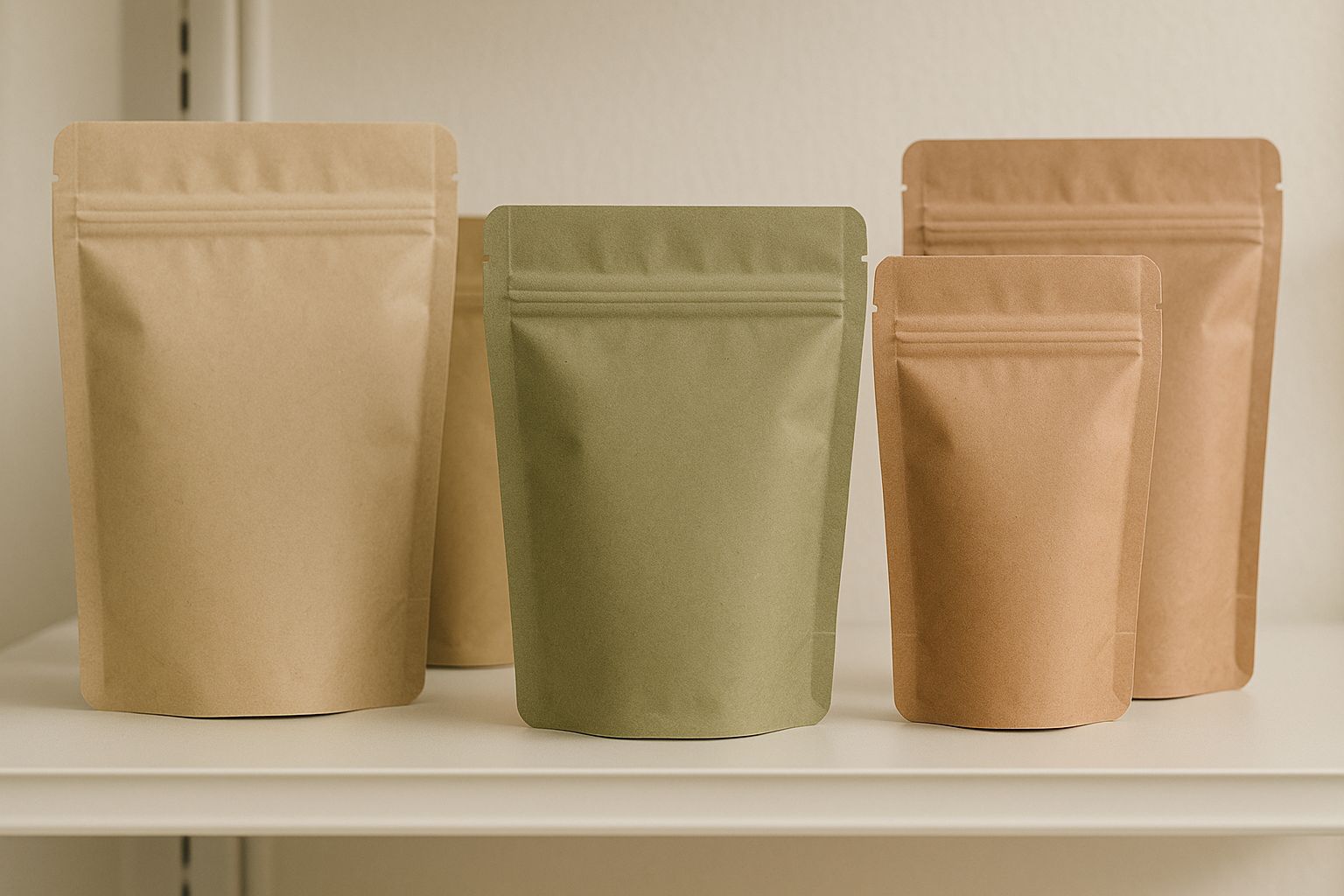
Eye-catching packaging can stop shoppers in their tracks.
Packaging that sells is about more than a pretty box. In2025 the most effective designs blend creativity, functionality and authenticity to make products jump off the shelf. Brand leaders should prioritize bold colors, unique structures, clear messaging and sustainable materials while adding human touches to win attention and build lasting loyalty[3][4].
• Customers encounter tens of thousands of products on every shop visit, and packaging drives about one‑third of buying decisions[3].
• The best designs combine aesthetics and usability: color psychology, tactile shapes, and clear information[5][4].
• Sustainability and authenticity are top priorities for modern consumers; recyclable materials and hand‑drawn elements help build trust[2][5].
• A cohesive look across product lines enhances brand recognition and loyalty[4].
Consumers are confronted with tens of thousands of products every time they walk into a store[3]. Your package has about seven seconds to make an impression, and research suggests roughly one‑third of a buying decision is based on how the packaging looks[3]. For brand leaders,understanding how to capture that fleeting attention is the difference between a sale and a missed opportunity. This article explores how thoughtful packaging design can elevate shelf presence and tell your product’s story.

Great packaging begins with empathy for where and how your products will be sold. Before sketching ideas, think about the environment—grocery aisles, boutique shelves or e‑commerce pages—and how your packaging will look alongside competitors[3]. Designing for the shelf means considering viewing distance, lighting and even how your package will stack or hang. A display mock‑up can reveal whether a concept stands out or blends in[3].
Color is a powerful tool for commanding attention. Bold palettes draw the eye and convey emotion, but the colors must also align with your category and brand values[3]. Fruity hues—lime green, mango orange and raspberry red—are trending in 2025 because they exude energy and fun[5]. At the other end of the spectrum, calming sunset gradients evoke trust and serenity for wellness and beauty products[5]. Whatever palette you choose, make sure it helps shoppers instantly recognize your product on a busy shelf.
Typography, imagery and layout also play starring roles.Consumers crave authenticity and human connection, so hand‑drawn illustrations and lino-cut‑inspired etches have become popular[5]. These imperfections suggest the product is crafted with care. Strategic die‑cut windows can reveal parts of the product without cluttering the design[1], while minimalist layouts and negative space keep the focus on what matters. Above all, clarity is key:customers are scanning, not reading, so your front panel must convey the product’s benefit within a few seconds[5].
Before choosing colors or materials, study where and how people will encounter your product. A package designed for a premium boutique should feel different from one destined for a dollar store or an e‑commerce warehouse. Location matters[3]; designing around the shelf ensures your product isn’t lost in the crowd.Consider shelf height, competitor colors and the shopper’s emotional state, and ask your designer to create a mock‑up for a realistic view[3].
Color influences emotion and purchasing behavior. Bold shades like red signal urgency or excitement, while blue evokes calm and reliability[3]. In 2025, lively “fruity” palettes—greens, yellows and pinks—attract younger, mobile‑first shoppers[5]. Sunset gradients offer a softer mood for wellness, beauty or premium foods[5]. Check cultural color associations if selling internationally[3].
Form and function go hand in hand. Unique shapes and tactile embellishments create memorable shelf presence and can convey premium value[2]. Cutouts let shoppers glimpse the product[1], and resealable closures make packaging easy to use[4]. Slim cans, single‑serve pouches and ergonomic grips cater to on‑the‑go consumers[5], while stand‑up pouches reduce waste and improve transport efficiency[2].
Packaging is a storyteller. Consumers are drawn to brands that feel human and authentic; the rise of simplistic scribbles and hand‑drawn textures reflects a desire to connect with craft and care[5]. Retro aesthetics and nostalgia tap into memories[2]. Transparency—both literal and metaphorical—builds trust by clearly listing ingredients and allowing the product to be seen[2]. Use fonts and imagery that match your brand voice[4].

Today’s shoppers expect environmentally responsible packaging. The sustainability push shows no signs of slowing[2]. Choose materials that can be recycled or composted and design right‑sized packaging[2]. Paperboard solutions can replace plastic while maintaining strength[2]. Consider refillable or reusable options to add value and encourage repeat purchases[4]. Sustainable choices boost brand reputation and loyalty[4].
With only a few seconds to capture attention, less is more. A clear hierarchy drives conversion: use a simple layout to communicate the product’s benefit immediately[5]. Consistency across product lines—fonts, colors and layout—makes it easier for shoppers to recognize and trust your brand[4].
Packaging isn’t just a container; it’s part of the customer experience. Thoughtful touches like premium finishes or tactile embossing create a sense of luxury on a budget[2]. A memorable unboxing moment sparks excitement and encourages social sharing[2]. Investing in quality packaging increases perceived value and drives repeat purchases[2].
Regulators are eyeing auto‑renewals more closely, which means brands must keep terms transparent and customer‑friendly. Sustainability is also in the spotlight, as packaging waste and carbon footprint become points of consumer concern. Technology will shape the next generation of packaging,with AI predicting demand cycles and tailoring offers dynamically. Global brands face another challenge: localization. What works in North America may fail in Asia or Europe, where payment methods, delivery cycles and consumer behaviors differ. Testing and adapting regionally will separate leaders from laggards.
Packaging design is the front line of your brand. It attracts attention, conveys your values and influences whether shoppers pick up your product or pass it by. By understanding your retail environment,harnessing color psychology, innovating with structure, telling a genuine story, prioritizing sustainability, simplifying your message and elevating the customer experience, you can create packaging that not only sells but also builds lasting connections. Don’t treat packaging as an afterthought; see it as a strategic tool for growth and a canvas for your brand’s personality.
Ready to elevate your packaging and stand out on the shelf? Contact us below to start turning your packaging into a powerful sales driver.
1. VistaPrint. 8 Exciting Packaging Design Trends for 2024 and 2025
2. The BoxMaker. Packaging Trends to Watch in 2025
3. crowdspring. 10 Packaging Design Insights to Give Your Products Outstanding Shelf Appeal
4. MSL Packaging & Fulfillment. Packaging Design: Lead Your Brand to Success With Proven Strategies and Real‑World Examples
5. SmashBrand. 12 Packaging Design Trends Brands Can’t Ignore Right Now